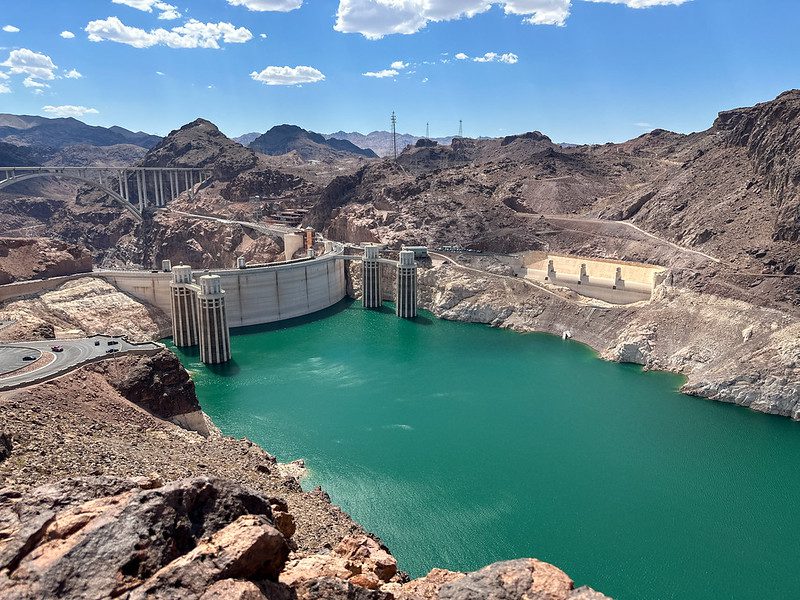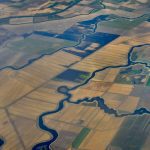- Bureau of Reclamation sets 2026 operations for Lakes Powell and Mead.
- Lake Powell will release 7.48 million acre-feet of water.
- Lake Mead will remain in a Level 1 Shortage Condition.
- Basin states face deadlines to reach post-2026 agreement.
Saturday, August 16, 2025 — Yesterday, the Bureau of Reclamation released its August 2025 24-Month Study , setting next year’s operating conditions for Lake Powell and Lake Mead. The update reflects ongoing drought in the Colorado River Basin and highlights the urgency of new guidelines for river management beyond 2026.
, setting next year’s operating conditions for Lake Powell and Lake Mead. The update reflects ongoing drought in the Colorado River Basin and highlights the urgency of new guidelines for river management beyond 2026.
Acting Commissioner David Palumbo said the findings demonstrate the need for “immediate action to secure the future of the Colorado River.” He emphasized that new rules must be strong enough to handle poor runoff conditions to ensure water for more than 40 million people.
Lake Powell Mid-Elevation Release Tier.
Projections show Lake Powell’s elevation at 3,538.47 feet on January 1, 2026—about 162 feet below capacity but still 48 feet above the minimum power pool. This places the reservoir in the Mid-Elevation Release Tier, resulting in a planned release of 7.48 million acre-feet of water during the 2026 water year, which runs from October 1, 2025, through September 30, 2026.
If conditions worsen, the volume could be reduced under the 2024 Record of Decision that supplements the 2007 Interim Guidelines.
Lake Mead Stays in Shortage.
Lake Mead is projected at 1,055.88 feet, which is 20 feet below the trigger for Lower Basin shortages. That means the reservoir will remain in a Level 1 Shortage Condition in 2026.
Under this shortage declaration:
-
Arizona must reduce by 512,000 acre-feet, about 18 percent of its annual share.
-
Nevada will contribute 21,000 acre-feet, or 7 percent of its apportionment.
-
Mexico will reduce by 80,000 acre-feet, or 5 percent of its annual allotment.
These cuts follow the 2007 Interim Guidelines, the Lower Basin Drought Contingency Plan, and international agreements including Minute 323.
The Push for Post-2026 Guidelines.
Existing management tools—including the 2007 Interim Guidelines, 2019 Drought Contingency Plans, and cross-border agreements—expire at the end of 2026. Federal officials have stressed the need for a new framework that addresses future shortages and climate challenges.
Scott Cameron, Acting Assistant Secretary for Water and Science at the Department of the Interior, said that reaching a consensus among the seven Basin states is essential. “We cannot afford to delay,” Cameron noted . He called for a preliminary agreement by mid-November, followed by a final seven-state proposal by mid-February 2026. The goal is to finalize the new plan by summer 2026 for use starting in the 2027 operating year.
. He called for a preliminary agreement by mid-November, followed by a final seven-state proposal by mid-February 2026. The goal is to finalize the new plan by summer 2026 for use starting in the 2027 operating year.
Interim Tools Still in Place.
Until then, near-term measures approved last year remain available. These include conservation of 3 million acre-feet or more of water in the Lower Basin, possible reductions in releases from Lake Powell, and moving additional water downstream from Upper Basin reservoirs under drought response operations.
“These short-term tools will only help us for so long,” Cameron said. He added that investments in infrastructure and conservation are continuing alongside the effort to create lasting guidelines.
Collaboration with States and Tribes.
Reclamation and the Department of the Interior continue to meet regularly with Basin states and Tribal Nations. The goal is to ensure water security and long-term sustainability as the region prepares for a new chapter in Colorado River management after 2026.
For more information, the full August 2025 24-Month Study is available at Reclamation’s website .
.
Image of Hoover Dam via the Bureau of Reclamation’s news release.





